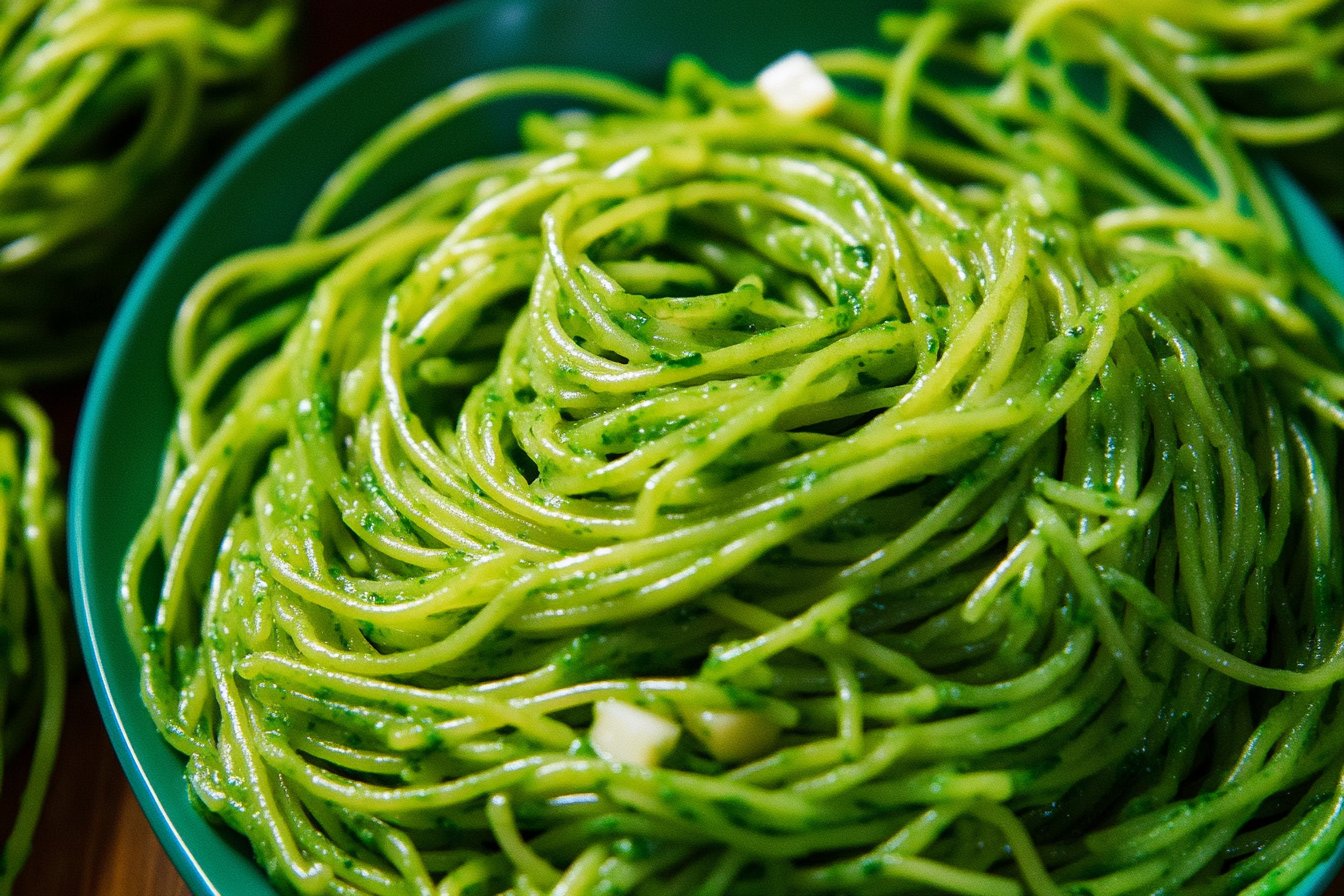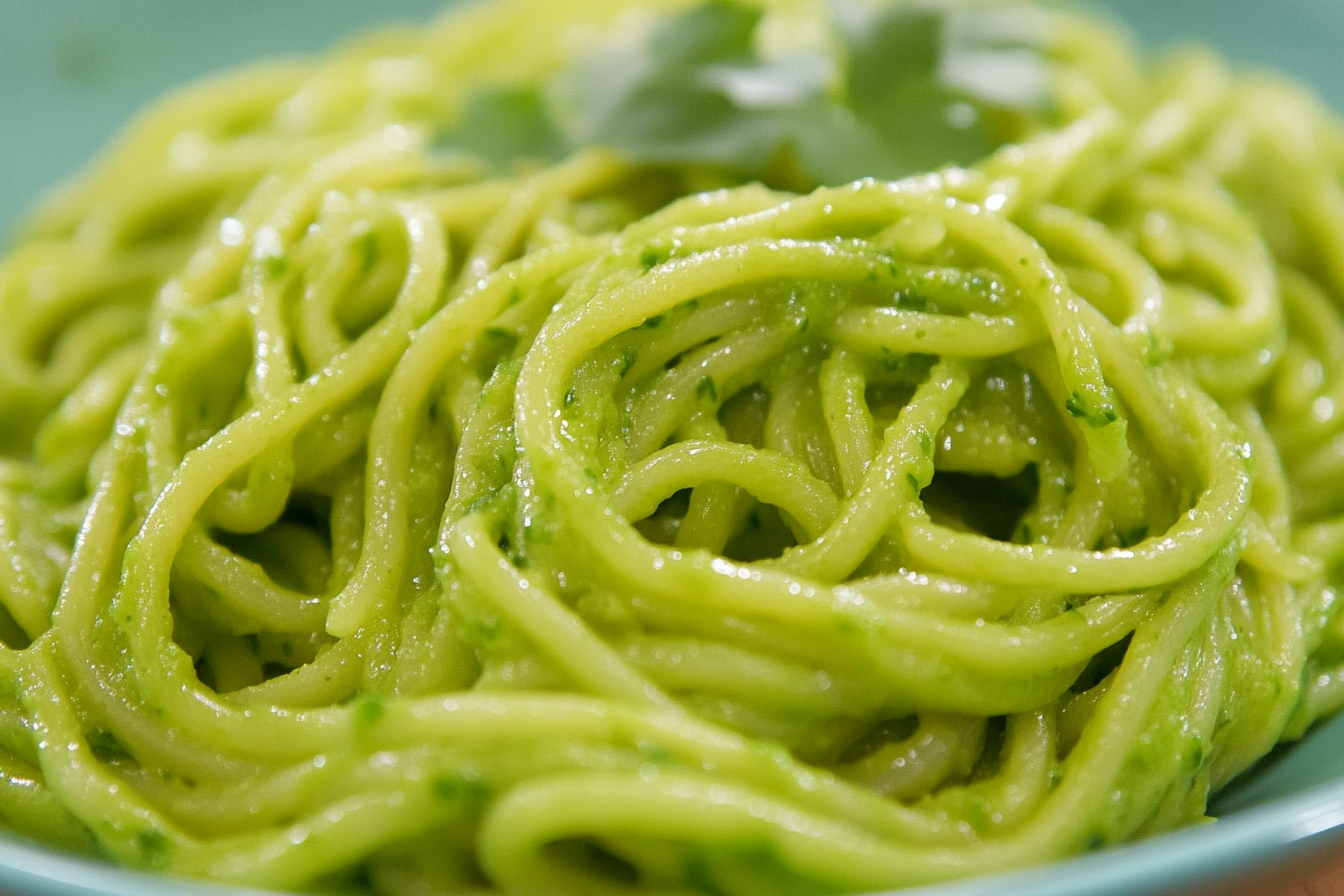Storing cooked meals properly is crucial for preserving their freshness and avoiding foodborne illnesses. One popular dish that often raises questions about its storage is green spaghetti. This vibrant dish, made from ingredients like spinach, basil, or pesto, has a limited shelf life, and knowing how to store it safely in the fridge is essential. In this guide, we’ll explore everything you need to know about how long green spaghetti lasts in the fridge, the factors affecting its shelf life, and how you can maximize freshness through proper storage techniques.
What Is Green Spaghetti?
Green spaghetti is a flavorful pasta dish, characterized by its bright green sauce made from ingredients such as spinach, basil, or avocado. Some versions of the dish also use pesto, which is made from a blend of basil, pine nuts, garlic, Parmesan, and olive oil. Whether you make the sauce yourself or purchase it from a store, it’s important to understand the storage considerations that come with such fresh and perishable ingredients.
This dish is popular not only because of its vibrant color but also because of its nutritional benefits. Spinach, basil, and avocado are all packed with vitamins and antioxidants, making green spaghetti a healthy option. But with its health benefits come challenges in preserving its freshness, as many of these ingredients have a short shelf life.
If you’re looking to make your own, follow this green spaghetti recipe to get started with a delicious homemade version.
Key Ingredients in Green Spaghetti
Understanding the individual ingredients used in green spaghetti is essential for determining how long the dish will last in your fridge. Here are some common ingredients and how they affect the shelf life of the dish:
- Spinach: This leafy green is one of the most commonly used ingredients in green spaghetti. While it’s rich in vitamins, spinach is also highly perishable. Once cooked, it should be refrigerated and consumed within a few days.
- Basil: Often used in pesto, basil adds a fresh flavor to green spaghetti. Like spinach, basil is best when fresh but can also spoil quickly. However, when incorporated into a sauce, it may last longer due to the presence of oil and other preserving ingredients.
- Pesto: Made with basil, pine nuts, garlic, Parmesan cheese, and olive oil, pesto can extend the shelf life of green spaghetti. The oil content helps to preserve the sauce, allowing it to last a bit longer than a spinach-based sauce.
- Avocado: Avocado is sometimes used to make a creamy green sauce. While delicious, avocado oxidizes and spoils quickly, which means green spaghetti made with avocado won’t last as long.
Each ingredient plays a role in determining how long the dish can safely be stored. If you want to learn more about the ingredients and variations of this dish, check out what green pasta sauce is made of.

Factors Affecting the Shelf Life of Green Spaghetti
Several factors influence how long green spaghetti lasts in the fridge. These factors will help you understand what to expect and how to store the dish more effectively.
1. Ingredients and Their Shelf Life
As mentioned earlier, the ingredients used in your green spaghetti significantly impact how long it will last in the fridge. Fresh ingredients like spinach and avocado tend to spoil faster than ingredients like pesto, which contains oils that act as natural preservatives.
- Fresh greens: Dishes containing fresh spinach or avocado will typically last only 3-4 days in the fridge due to the perishable nature of these ingredients. If the spinach is pre-cooked or wilted, the dish may spoil even sooner.
- Pesto-based dishes: If your green spaghetti uses a pesto sauce, you can expect it to last 4-5 days in the fridge. The olive oil and Parmesan in the pesto sauce help to extend its shelf life.
2. Storage Conditions
Proper storage is key to ensuring your green spaghetti stays fresh as long as possible. Let’s go over the essential storage tips:
- Use airtight containers: Store the dish in an airtight container to prevent air and moisture from causing spoilage. Glass containers with tight-fitting lids work best, but high-quality plastic containers can also be effective.
- Refrigerator temperature: Your refrigerator should be kept at or below 40°F (4°C) to slow bacterial growth. If the fridge is warmer than this, the dish may spoil more quickly.
- Avoid frequent temperature changes: Keep your fridge door closed as much as possible to maintain a consistent temperature. Constant changes in temperature can affect the shelf life of food.
By ensuring proper storage conditions, you can extend the life of green spaghetti and enjoy it safely for several days.
3. Homemade vs. Store-Bought Versions
Store-bought green spaghetti often contains preservatives that extend its shelf life beyond what’s possible with homemade versions. While homemade green spaghetti is fresher and healthier, it will spoil faster due to the absence of additives.
- Homemade green spaghetti: Typically lasts between 3-4 days in the fridge. Since homemade sauces don’t contain preservatives, the dish is more prone to spoilage.
- Store-bought green spaghetti: Store-bought versions can last up to 5 days or more, depending on the ingredients and preservatives used. Always check the expiration date and storage instructions on the packaging.
How Long Does Green Spaghetti Last in the Fridge?
Now that we’ve explored the factors influencing the shelf life of green spaghetti, let’s get specific about how long you can expect the dish to last under optimal conditions.
- Homemade Green Spaghetti: On average, homemade green spaghetti will last 3-4 days in the fridge when stored in an airtight container. This is especially true for versions made with fresh spinach or avocado, as these ingredients spoil quickly.
- Store-Bought Green Spaghetti: If you’ve purchased pre-made green spaghetti from the store, you can expect it to last slightly longer typically 5 days or more. Preservatives in store-bought sauces help to slow the growth of bacteria and mold.
If you’re unsure whether the dish is still good, it’s always better to err on the side of caution. Spoiled pasta can lead to foodborne illnesses, so be sure to check for signs of spoilage before eating.
Signs That Green Spaghetti Has Gone Bad
It’s important to know how to tell if your green spaghetti has spoiled. Here are some key signs that the dish is no longer safe to eat:
- Mold or discoloration: If you see any mold growing on the pasta or the sauce, or if the green sauce has turned a dull, brownish color, it’s time to discard the dish.
- Sour or off smell: A foul odor is one of the first indicators that the food has gone bad. If the green spaghetti smells sour or off in any way, don’t risk eating it.
- Slimy texture: If the pasta feels slimy or overly sticky, bacteria have likely started to grow, and it’s no longer safe to eat.
When in doubt, throw it out. Eating spoiled food can lead to food poisoning, which can cause nausea, vomiting, and diarrhea. Always check your food before eating to ensure it’s safe.
how to identify whether the dish is still safe to eat, learn more in Recognizing Signs of Food Spoilage.
Best Practices for Storing Green Spaghetti
Storing green spaghetti correctly will help extend its shelf life and keep it fresh for as long as possible. Here are some best practices to follow:
1. Choose the Right Storage Containers
Using the right containers is key to keeping your food fresh. Glass containers with airtight lids are the best option, as they prevent air and moisture from entering and keep the food fresh longer. Alternatively, BPA-free plastic containers or silicone bags can also work well.
- Glass vs. Plastic: Glass containers are less likely to retain odors and stains, making them a better option for storing highly aromatic foods like green spaghetti. However, high-quality plastic containers with airtight lids can also be effective.
- Silicone Bags: If you’re looking to minimize plastic use, reusable silicone bags are a great alternative for storing leftovers.
2. Label and Date Your Containers
It’s easy to forget how long something has been in the fridge, especially when you have multiple leftovers stored at once. To avoid confusion, always label your containers with the date you stored the food. This helps ensure you consume it within a safe timeframe.
3. Maintain Refrigerator Temperature
As mentioned earlier, keeping your fridge at the proper temperature is crucial for food safety. The USDA recommends setting your fridge at 40°F (4°C) or lower to prevent the growth of harmful bacteria. Consider using a fridge thermometer to ensure the temperature remains consistent.
4. Avoid Cross-Contamination
To prevent cross-contamination, always store cooked food like green spaghetti away from raw meat, poultry, or seafood. Cross-contamination can lead to the spread of bacteria, increasing the risk of foodborne illness.

Can You Freeze Green Spaghetti?
If you’ve made more green spaghetti than you can eat within a few days, freezing is a great option for extending its shelf life. Here’s how to freeze green spaghetti properly:
Freezing Steps:
- Portion the pasta: Divide the spaghetti into individual servings before freezing. This makes it easier to thaw only what you need.
- Use freezer-safe containers: Place the portions in airtight freezer-safe bags or containers. Be sure to remove as much air as possible before sealing the bags.
- Label and date the bags: Always label your containers with the date you froze them to ensure you eat the food within the recommended timeframe.
How Long Does Green Spaghetti Last in the Freezer?
When frozen, green spaghetti can last up to 2-3 months. After that time, the flavor and texture may start to degrade, though the food is still safe to eat.
To thaw, simply transfer the pasta from the freezer to the fridge and let it thaw overnight. Once thawed, you can reheat it on the stove or in the microwave.
Health Risks of Consuming Spoiled Green Spaghetti
Eating spoiled green spaghetti can lead to foodborne illnesses, which can cause unpleasant symptoms such as nausea, vomiting, diarrhea, and abdominal pain. Bacteria such as Listeria, Salmonella, and E. coli can grow in improperly stored food, leading to potential health risks.
To avoid these risks, always check for signs of spoilage before eating leftover pasta. If you notice any off smells, changes in texture, or visible mold, discard the food immediately.
Frequently Asked Questions (FAQs)
1. Can I eat green spaghetti that’s been in the fridge for a week?
No, it’s not recommended to eat green spaghetti that has been stored for more than 5 days in the fridge. It’s best to consume it within 3-4 days.
2. Can I freeze green spaghetti?
Yes, green spaghetti can be frozen for up to 2-3 months. Just make sure to use airtight, freezer-safe containers or bags and label them with the date.
3. How do I know if green spaghetti has gone bad?
Look for signs such as mold, a sour smell, or a slimy texture. If any of these are present, discard the dish to avoid foodborne illness.
Conclusion
In summary, green spaghetti can last 3-5 days in the fridge, depending on the ingredients and how it is stored. To ensure maximum freshness and food safety, always store the dish in an airtight container, maintain a fridge temperature of 40°F (4°C) or lower, and check for signs of spoilage before consuming. For longer storage, freezing is an excellent option, allowing you to enjoy your dish for up to 3 months.
By following these guidelines, you can safely enjoy your green spaghetti without worrying about spoilage or foodborne illness.

